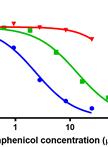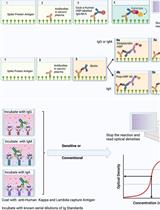- Submit a Protocol
- Receive Our Alerts
- Log in
- /
- Sign up
- My Bio Page
- Edit My Profile
- Change Password
- Log Out
- EN
- EN - English
- CN - 中文
- Protocols
- Articles and Issues
- For Authors
- About
- Become a Reviewer
- EN - English
- CN - 中文
- Home
- Protocols
- Articles and Issues
- For Authors
- About
- Become a Reviewer
INF-gamma Release ELISpot Assay
Published: Vol 2, Iss 6, Mar 20, 2012 DOI: 10.21769/BioProtoc.120 Views: 22011

Protocol Collections
Comprehensive collections of detailed, peer-reviewed protocols focusing on specific topics
Related protocols

Mitochondrial Biogenesis Assay after 5-day Treatment in PC-3 Cells
Yili Xu and Joy Y. Feng
Jan 20, 2015 11996 Views
Determining Ribosome Translational Status by Ribo-ELISA
Amandine Bastide [...] Alexandre David
Jan 5, 2018 7798 Views

An Optimised Indirect ELISA Protocol for Detection and Quantification of Anti-viral Antibodies in Human Plasma or Serum: A Case Study Using SARS-CoV-2
Claire Baine [...] Jennifer Serwanga
Dec 20, 2023 3537 Views
Abstract
IFN-γ (Interferon-gamma) is produced mainly by activated T cells and NK cells. Production of IFN-γ (Interferon-gamma) by helper T cells as well as cytotoxic T cells is a hallmark of the TH1-type phenotype, thus, high-level production of IFN-γ (Interferon-gamma) is typically associated with effective host defense against intracellular pathogens. The Enzyme-Linked ImmunoSpot (ELISpot) assay is commonly used to assess the function of antigen specific T cells by detecting IFN-γ release. The ELISpot assay is a very sensitive immunoassay, allowing the detection of a secreted cytokine at the single cell level. With detection levels that can be as low as one cell in 100,000, the ELISpot is one of the most sensitive cellular assays available. Depending on the substance analyzed, the ELISpot assay is between 20 and 200 times more sensitive than a conventional ELISA.
Materials and Reagents
- Mouse IFN-γ ELISpot kit (ALP) (Mabtech, catalog number: 3321-2A )
- Human IFN-γ ELISpot kit (ALP) (Mabtech, catalog number: 3420-2A )
Note: The above ELISpot kits have been tested by the author and may be substituted with the kits desired by users.
- SIGMAFAST™ BCIP®/NBT (Sigma-Aldrich, catalog number: B5655 )
- Phosphate buffered saline (PBS)
- Phorbol 12-myristate 13-acetate (PMA) (Sigma-Aldrich, catalog number: 79346 )
- Ionomycin (Sigma-Aldrich, catalog number: I9657 )
- Wash buffer (Santa Cruz Biotechnology, catalog number: sc-29113 ) (see Recipes)
Equipment
- AID EliSpot Reader classic (Autoimmun Diagnostika GmbH)
- ELISpot plate
- 37 °C humidified incubator
Procedure
Day 1: Preparation of ELISpot plate (sterile conditions)
- Dilute the coating antibody (AN18) to 2-15 μg/ml in sterile PBS, pH 7.4 (16 μl antibody in 8 ml PBS, 1:500).
- Remove the ELISpot plate from the package and add 75 μl/well of the antibody solution and incubate overnight at 4-8 °C.
Day 2: Incubation of cells in plate (sterile conditions)
- Remove excess antibody and wash plate 5 times with sterile wash buffer (PBS-T), 250 μl/well.
- Add 250 μl/well of medium containing 10% of the same serum as used for the cell suspensions (usually FBS). Incubate for at least 2 h at room temperature (RT).
- Remove the medium and add the cells suspension including possible stimulatory agents. Typical groups include cells with no stimulant, cells with antigens (protein or peptides) and cells with PMA (10 ng/ml) and Ionomycin (500 ng/ml) (positive control).
- The number of cells in each well depends on the frequency of the IFN-γ releasing cells in your sample, usually from 2 x 104 to 2.5 x 105. If target cells are used such as T2 pulsed with peptide or tumor cells, the T cells/target cells ratio needs to be determined to achieve the optimal detection.
- Put the plate in a 37 °C humidified incubator with 5% CO2 and incubate for 12-48 h. Do not move the plate during this time and take measures to avoid evaporation.
Day 3: Incubation of cells in plate (sterile conditions)
- Remove the cells by emptying the plate and add 250 μl/well H2O and keep it on ice for 10 min.
- Wash the plate 5 times with wash buffer, 250 μl/ well.
- Dilute the detection antibody (R4-6A2-biotin) to 0.5-1 μg/ml (4 μl antibody in 8 ml PBS, 1:2000) in PBS containing 0.5% FBS. Add 75 μl/ well and incubate for 2 h at 37 °C.
- Wash plate 5 times with wash buffer, 250 μl/ well.
- Dilute the Streptavidin-ALP (1:1,000) in PBS-0.5% FBS and add 100 μl/well. Incubate for 1 h at RT.
- Wash plate 5 times with wash buffer, 250 μl/ well.
- Prepare the substrate solution by dissolving one BCIP/NBT tablet in 10 ml ddH2O and add 100 μl/ well.
- Develop the plate in the dark until distinct spots emerge.
- Stop color development by washing extensively in tap water. If desirable, remove the plate from the tray or the inderdrain and rinse the underside of the membrane.
- Leave the plate to dry. Inspect and count spots in an ELISpot reader or in a dissection microscope (not recommended).
- Store plate in the dark at RT.
Recipes
- Wash buffer
1x PBS
0.1% Tween-20
Acknowledgments
This protocol was previously used in Jager et al. (2000) and Shang et al. (2004).
References
- Jager, E., Gnjatic, S., Nagata, Y., Stockert, E., Jager, D., Karbach, J., Neumann, A., Rieckenberg, J., Chen, Y. T., Ritter, G., Hoffman, E., Arand, M., Old, L. J. and Knuth, A. (2000). Induction of primary NY-ESO-1 immunity: CD8+ T lymphocyte and antibody responses in peptide-vaccinated patients with NY-ESO-1+ cancers. Proc Natl Acad Sci U S A 97(22): 12198-12203.
- Shang, X. Y., Chen, H. S., Zhang, H. G., Pang, X. W., Qiao, H., Peng, J. R., Qin, L. L., Fei, R., Mei, M. H., Leng, X. S., Gnjatic, S., Ritter, G., Simpson, A. J., Old, L. J. and Chen, W. F. (2004). The spontaneous CD8+ T-cell response to HLA-A2-restricted NY-ESO-1b peptide in hepatocellular carcinoma patients. Clin Cancer Res 10(20): 6946-6955.
Article Information
Copyright
© 2012 The Authors; exclusive licensee Bio-protocol LLC.
How to cite
Zhang, H. (2012). INF-gamma Release ELISpot Assay. Bio-protocol 2(6): e120. DOI: 10.21769/BioProtoc.120.
Category
Immunology > Antibody analysis > Antibody detection
Biochemistry > Protein > Immunodetection > ELISA
Immunology > Immune cell function > Lymphocyte
Do you have any questions about this protocol?
Post your question to gather feedback from the community. We will also invite the authors of this article to respond.
Share
Bluesky
X
Copy link








